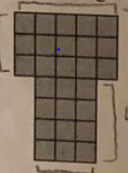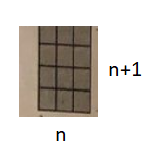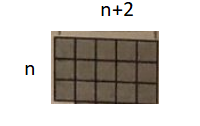Problem B2) Given the following figures made from gray squares: 3 4. n = 1 n = 2 n=44 a) Assuming there is a pattern, draw the next object (n = 4). b) Fill in the following table: c) Develop a general formula for the nth figure that gives the number of gray Number of gray squares n = 1 squares used. n = 2 14 n = 3 24 27 44 n = 4
Equations and Inequations
Equations and inequalities describe the relationship between two mathematical expressions.
Linear Functions
A linear function can just be a constant, or it can be the constant multiplied with the variable like x or y. If the variables are of the form, x2, x1/2 or y2 it is not linear. The exponent over the variables should always be 1.
I need help developing a formula based on my figures and my completed table. If someone could explain how they came up with the formula and how I could explain it based on just the figures that would be great!

(c)
the number of grey squares used will be calculated as follows
Each figure uses three consecutive numbers
let the number be n , n+1 and n+2
If we break the figures horizontal and vertical component as follows
consider for n= 3
 can be broken into two parts
can be broken into two parts
 and
and 
Therefore, calculate the area of rectangles
area of first rectangle will be and area of second will be
Therefore, the total area will be
This will also give the number of grey squares
The same is true for all the figures
Trending now
This is a popular solution!
Step by step
Solved in 2 steps with 3 images









